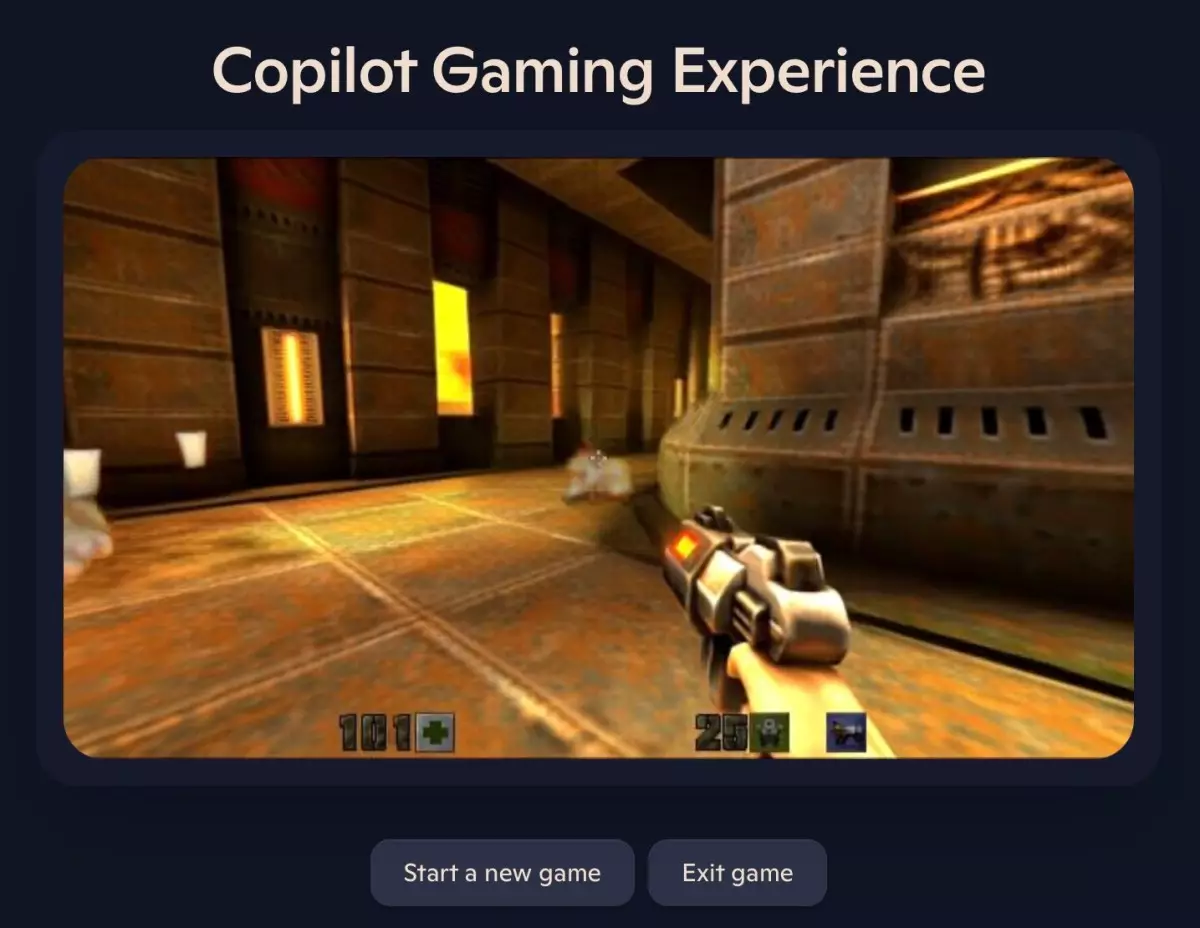Microsoft’s launch of a playable, browser-based version of the iconic Quake II serves as a bold exploration into the realm of artificial intelligence in gaming. While its purpose as a tech demo for the company’s Copilot AI platform is commendable, the experience remains somewhat underwhelming, raising questions about the balance between innovation and user engagement. Despite the nostalgia that Quake II conjures, Microsoft’s demonstration blurs the line between being revolutionary and merely a gimmick. For gamers and developers alike, the potential of AI seems tantalizing, but the execution feels like a step back in terms of player experience.
Playing through a single level of Quake II for merely a few minutes is certainly an enticing prospect, yet players are swiftly reminded of the limitations inherent in this approach. The novelty of controlling the action through keyboard inputs certainly excites curiosity, but when the demonstrative capabilities are juxtaposed with their constraints, it paints a more complex picture. Users can engage with the environment—moving, jumping, and shooting—yet these actions often feel disconnected from the core essence of gaming, leaving the question: is this really “playing the game,” or merely “playing the model”?
The Muse AI Family: A Double-Edged Sword
Delving deeper into the technology behind this demo, Microsoft has introduced its Muse family of AI models designed for interactive gaming experiences. While the premise promises immediate feedback from the AI based on user input, the reality presents a series of frustrating shortcomings. The researchers themselves candidly address the issues of object permanence and enemy behavior, emphasizing that players experience a disjointed reality where they can lose sight of game mechanics within moments, culminating in a chaotic and oftentimes unpredictable gameplay experience.
While such quirks may present an amusing twist—allowing players to “teleport” by strategically averting their gaze—this erratic behavior often disrupts the fundamental flow of gameplay, elevating frustration over fun. Critics have rightly pointed out that this experience diverges significantly from the intricate design of traditional video games that are built to offer rich, immersive engagements. For some, these limitations are disheartening; they appreciate the AI’s potential, yet wonder if its current iteration is merely a prototype that doesn’t capture the robust and layered experiences that classic titles embody.
A Mixed Reception from the Gaming Community
The reception of this initiative isn’t unanimous. Prominent voices in game design, like writer and designer Austin Walker, have decisively criticized Microsoft’s approach. Walker warns that the playful intent behind this experimentation reveals a fundamental misunderstanding of gaming’s nuanced architecture. The intricacies of a game, from its code and design to its audio and artistic expression, contribute significantly to the experience; stripping these away in favor of an AI model misses the point of what makes games enjoyable. For Walker and others, the potential for AI to aid in game preservation feels overly simplistic, as it overlooks context and player engagement.
This sentiment resonates with a broader community within the gaming world. Many enthusiasts echo Walker’s critique, contending that the AI demo lacks the soul and complexity found within the original Quake II. By focusing on rudimentary interactions, Microsoft risks alienating gamers who value the depth and craftsmanship of fully-developed titles, suggesting that simply porting classic games into AI-driven models may not serve preservation in a meaningful way.
Potential Paths Forward
While the prospects of AI-based models in gaming are undeniably captivating, the challenges brought to light by this Quake II demo underscore the necessity for thoughtful innovation. The current execution might serve as a cautionary tale about the over-reliance on AI to reinvent the gaming landscape without a deep understanding of what truly constitutes great gameplay. Microsoft has the technical prowess to push boundaries, yet the journey should prioritize preserving the engaging experiences that have historically defined gaming.
This isn’t to dismiss the potential entirely; rather, it calls upon developers to strike a balance, ensuring that they harness AI’s capabilities without reducing complex games to oversimplified interactions. The dream of having classic titles effortlessly traversable across platforms is admirable, and with further refinement, it could lead to a renaissance of gaming experiences that combine the nostalgic essence with innovative technology. In the current landscape, however, the challenge remains: can AI genuinely replicate or enhance the magic of classic gaming, or will it forever languish in the realm of over-ambitious experiments?

